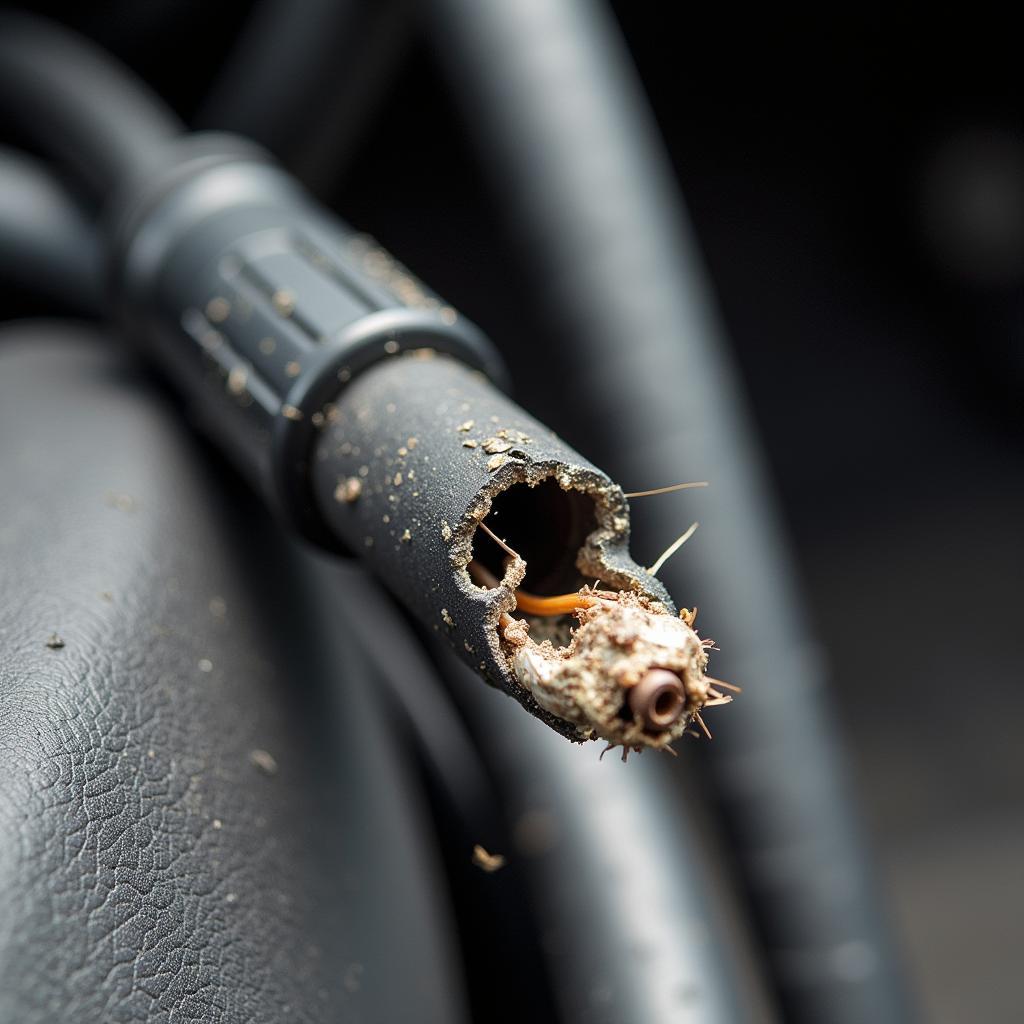Rust bubbles on your car are more than just an eyesore. They signal a creeping corrosion that, if left unchecked, can compromise your vehicle’s structural integrity. This guide will equip you with the knowledge and practical steps to effectively address rust bubbles and prevent future outbreaks.
Understanding the Enemy: What Causes Rust Bubbles?
Rust, scientifically known as iron oxide, forms when iron reacts with oxygen and water. Your car’s steel body panels are particularly vulnerable, especially in areas where the paint has chipped or scratched, exposing the bare metal. Moisture then seeps in, initiating the oxidation process and creating those unsightly bubbles.  Close up view of rust bubbles forming on a car door
Close up view of rust bubbles forming on a car door
Identifying the Severity of the Rust Damage
Before you start fixing rust bubbles, it’s crucial to assess the damage. Superficial rust, affecting only the paint layer, is relatively easy to fix. However, if the rust has penetrated deeper into the metal, more extensive repairs will be required. A simple poke with a screwdriver can help determine the extent of the corrosion. If the metal feels soft or crumbly, you’re dealing with a more serious issue.
Surface Rust: A Minor Inconvenience
Surface rust appears as small, blister-like bubbles in the paint. It can be treated effectively with DIY methods.
Deep Rust: A More Serious Concern
Deep rust penetrates the metal, compromising its strength. It often requires professional intervention, including patching or replacing the affected panel. Ignoring deep rust can lead to significant structural damage, impacting your car’s safety and value.
DIY Rust Repair: Tackling Surface Rust
Fixing surface rust is a manageable DIY project. Here’s a step-by-step guide:
- Gather your supplies: You’ll need sandpaper (various grits), rust converter, primer, automotive paint, clear coat, masking tape, and safety glasses.
- Prepare the area: Clean the rusted area thoroughly with soap and water. Mask off the surrounding areas to protect the undamaged paint.
- Sand the rust: Start with coarser grit sandpaper to remove the rust bubbles and any loose paint. Gradually switch to finer grits to smooth the surface. how to fix car radio cd player
- Apply rust converter: This chemical solution converts rust into a stable compound, preventing further corrosion. Follow the manufacturer’s instructions carefully.
- Prime the area: Apply a thin, even coat of automotive primer. This creates a smooth surface for the paint to adhere to. how to fix a car cd player]
- Paint and clear coat: Once the primer is dry, apply several thin coats of automotive paint that matches your car’s color. Finish with a clear coat for added protection and shine.
When to Call a Professional
If the rust has penetrated deeply into the metal, or if you’re uncomfortable with DIY repairs, it’s best to consult a professional. They have the expertise and tools to handle more complex rust repairs, including welding and panel replacement.
“Rust is like a cancer for your car,” says John Miller, a seasoned automotive technician with over 20 years of experience. “Addressing it early is crucial to preventing further damage and costly repairs down the road.”
Preventing Future Rust Bubbles
Prevention is always better than cure. Here are some tips to keep rust at bay:
- Regular washing and waxing: This helps protect your car’s paint and prevents moisture from reaching the metal.
- Touch up paint chips and scratches promptly: These are entry points for rust. how to fix a jammed cd player in car]
- Undercoating: Applying an undercoating can protect the underside of your car, which is particularly susceptible to rust. fix car cd player laser]
- Garage your car: Protecting your car from the elements reduces its exposure to moisture and other corrosive substances. how to fix jammed cd player in car]
“Don’t underestimate the importance of regular car washes,” advises Maria Rodriguez, an automotive detailing expert. “It’s a simple yet effective way to keep your car’s paint in top condition and prevent rust.”
Conclusion
Fixing rust bubbles on your car is essential for maintaining its appearance, structural integrity, and value. By understanding the causes of rust and following the steps outlined in this guide, you can effectively tackle surface rust and prevent future outbreaks. For deeper rust issues, don’t hesitate to seek professional assistance. Contact AutoTipPro at +1 (641) 206-8880 or visit our office at 500 N St Mary’s St, San Antonio, TX 78205, United States for expert advice and assistance with all your car repair needs.







Leave a Reply